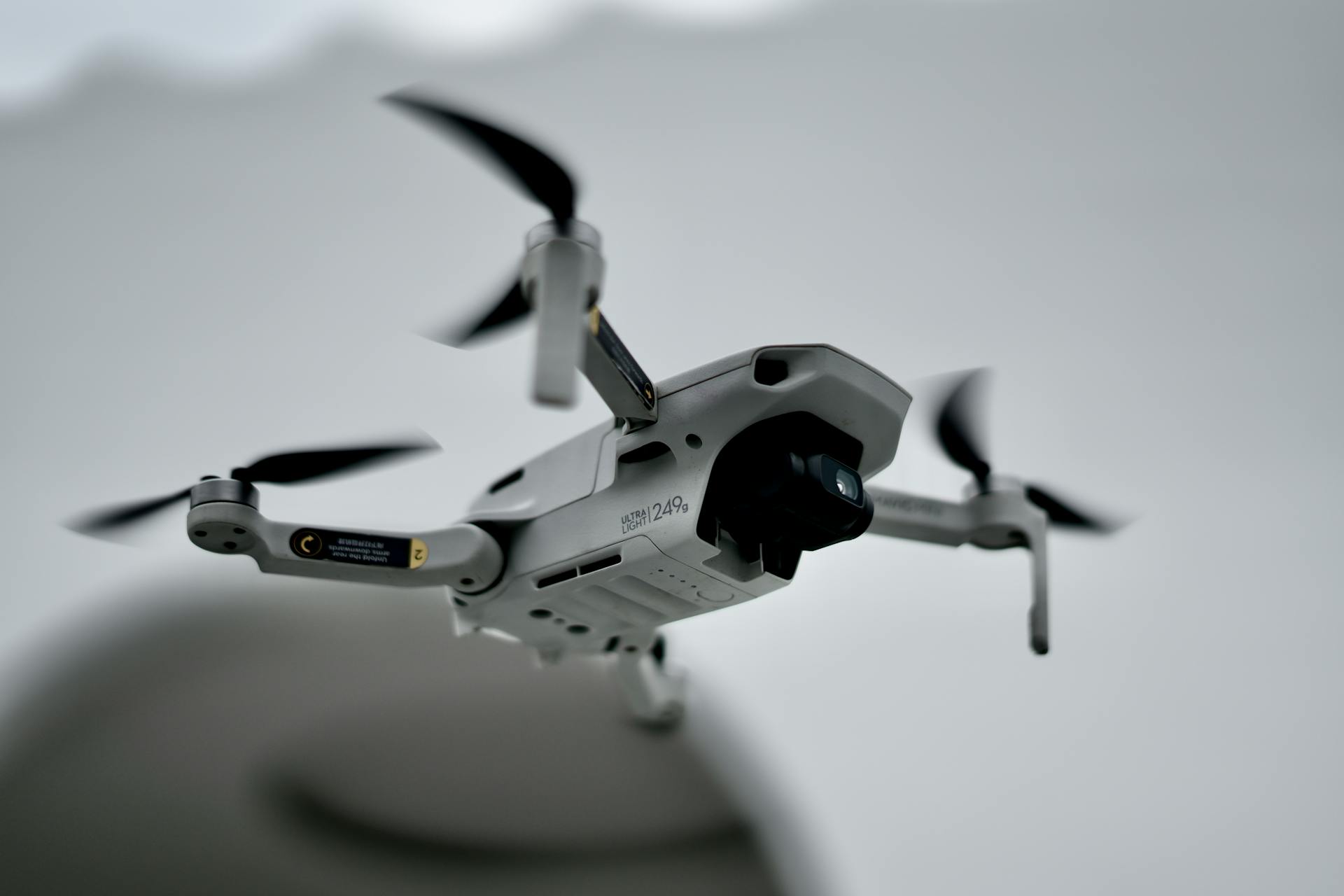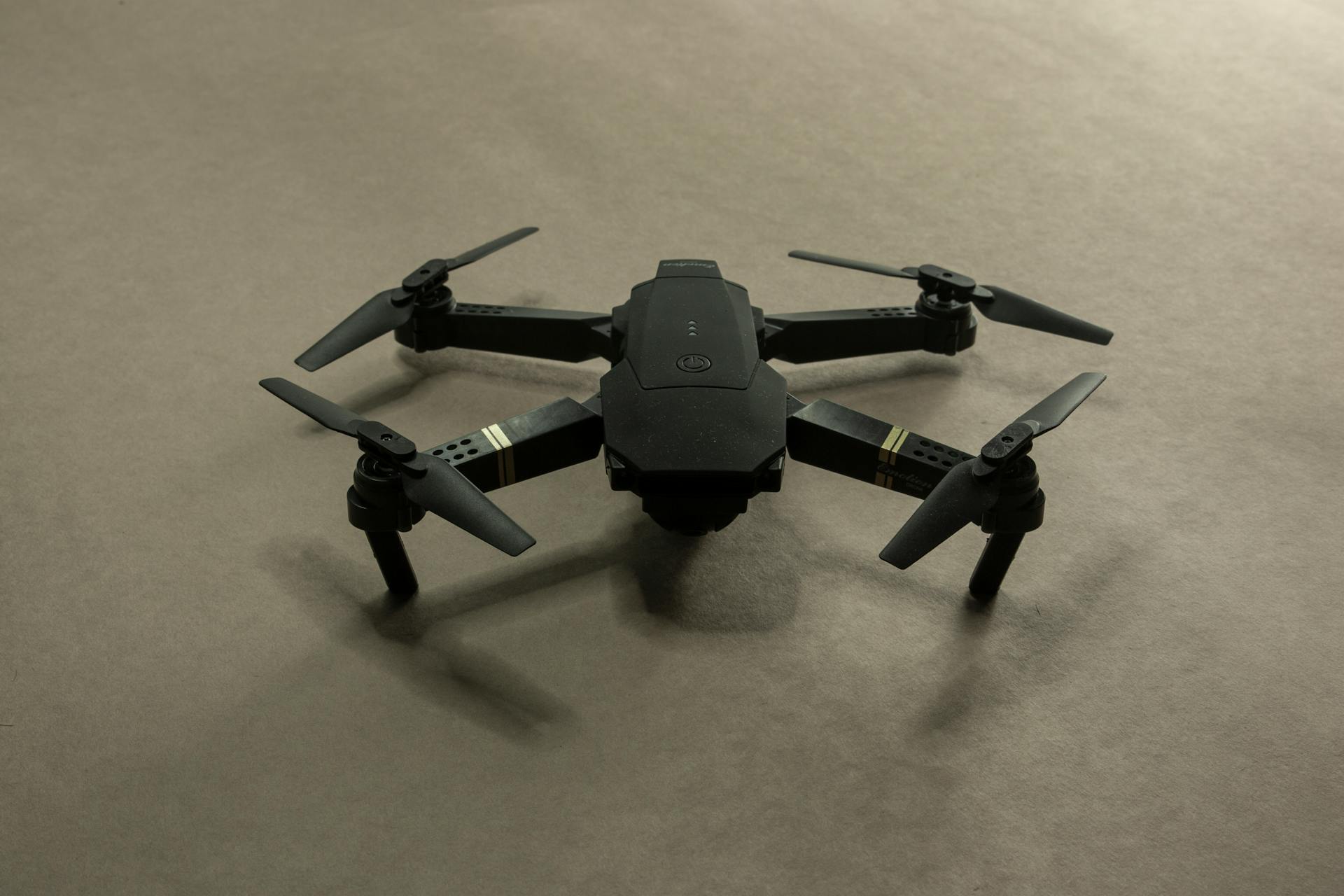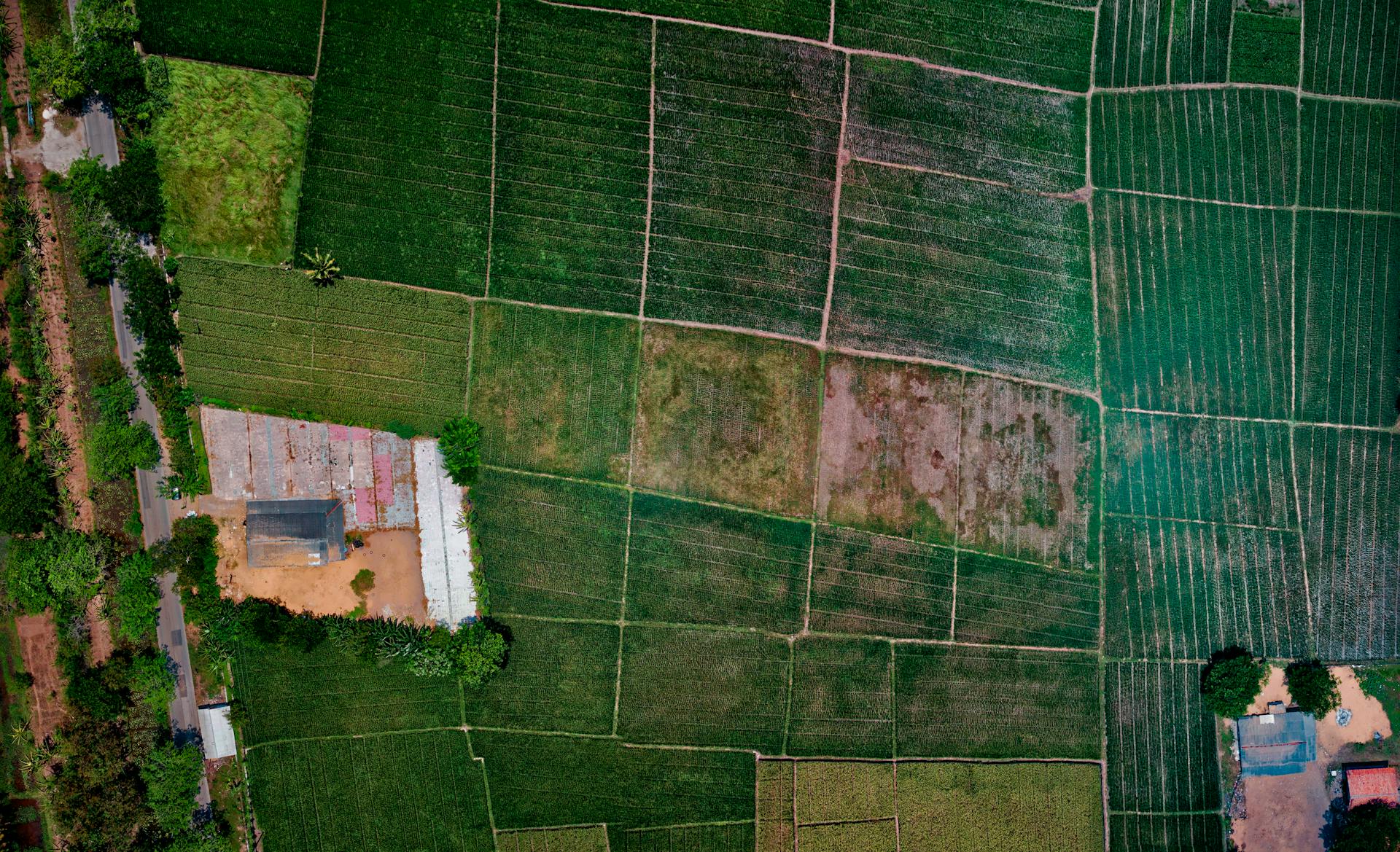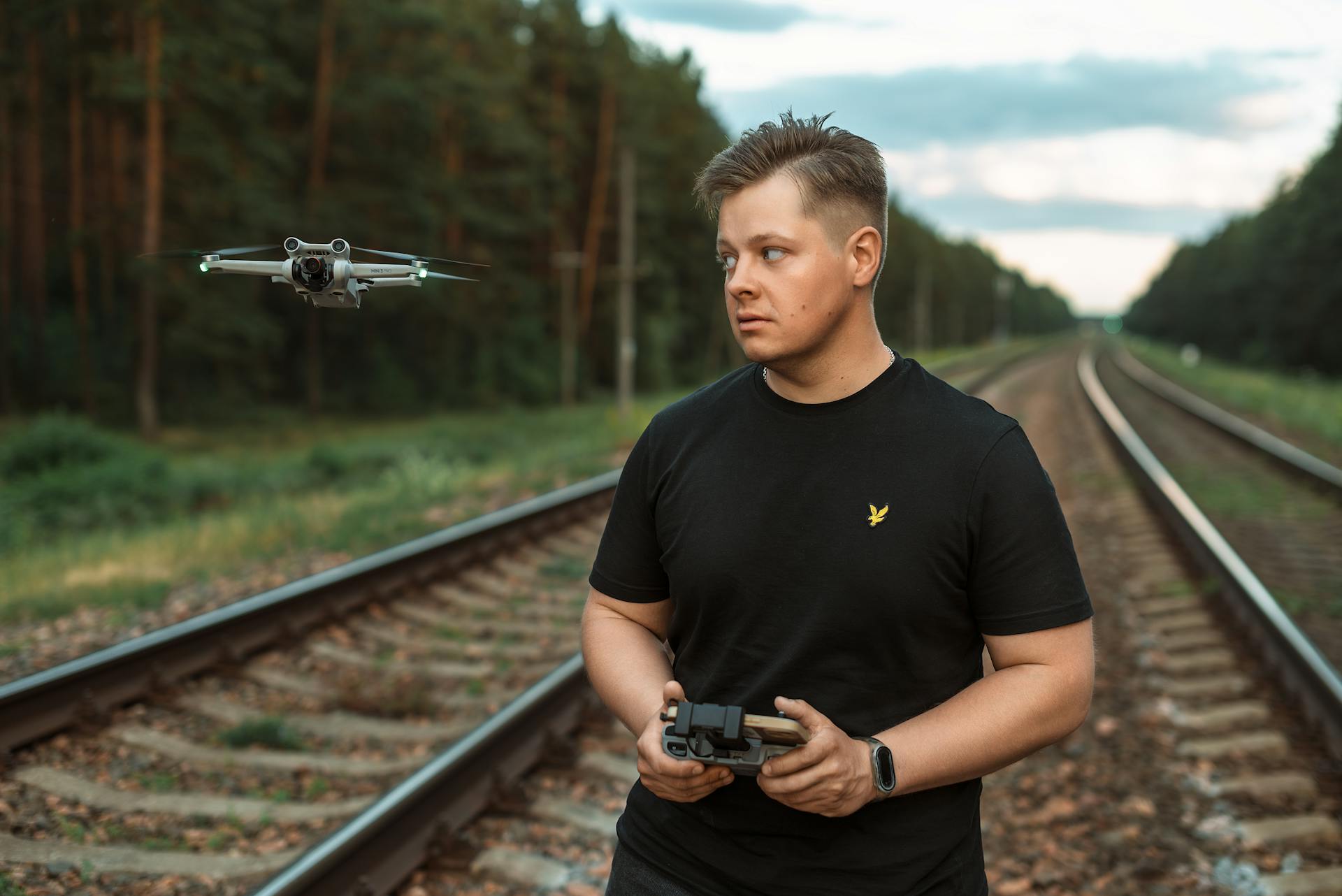
As a remote drone pilot, you'll be responsible for operating unmanned aerial systems (UAS) from a remote location.
The Federal Aviation Administration (FAA) requires remote drone pilots to obtain a Part 107 certification, which involves passing a knowledge test.
You'll need to have a strong understanding of aviation regulations, weather conditions, and aircraft systems to succeed in this role.
The median salary for remote drone pilots is around $60,000 per year, according to the Bureau of Labor Statistics.
Broaden your view: Remote Pilot Small Unmanned Aircraft Systems Study Guide
What Is Remote Drone Pilot?
A remote drone pilot is a professional who operates a drone from a remote location, often using a joystick or controller to navigate and capture footage or data.
Remote drone pilots typically work in industries such as construction, surveying, and cinematography, where high-quality aerial footage is necessary.
They use specialized equipment, including drones with high-definition cameras and GPS systems, to capture images and data from above.
Remote drone pilots often work independently, but may also collaborate with teams to achieve specific goals, such as surveying a large construction site.
See what others are reading: How Do Delivery Drones Work
Their work requires a high level of skill and attention to detail, as well as the ability to navigate complex airspace regulations.
Some remote drone pilots may also specialize in areas such as search and rescue, where their skills can be used to locate missing people or assess disaster damage.
Remote drone pilots typically undergo extensive training and certification to ensure they can operate drones safely and effectively.
Benefits and Drawbacks
Becoming a remote drone pilot requires a significant time investment, often taking several months to a year to complete the necessary training and certification.
Purchasing a drone itself is a monetary investment, though one that's less costly than becoming an airplane or helicopter pilot.
The cost of a drone can range from a few hundred to several thousand dollars, depending on the model and features.
While the initial investment may seem daunting, many remote drone pilots find the benefits to be well worth the cost.
Pros
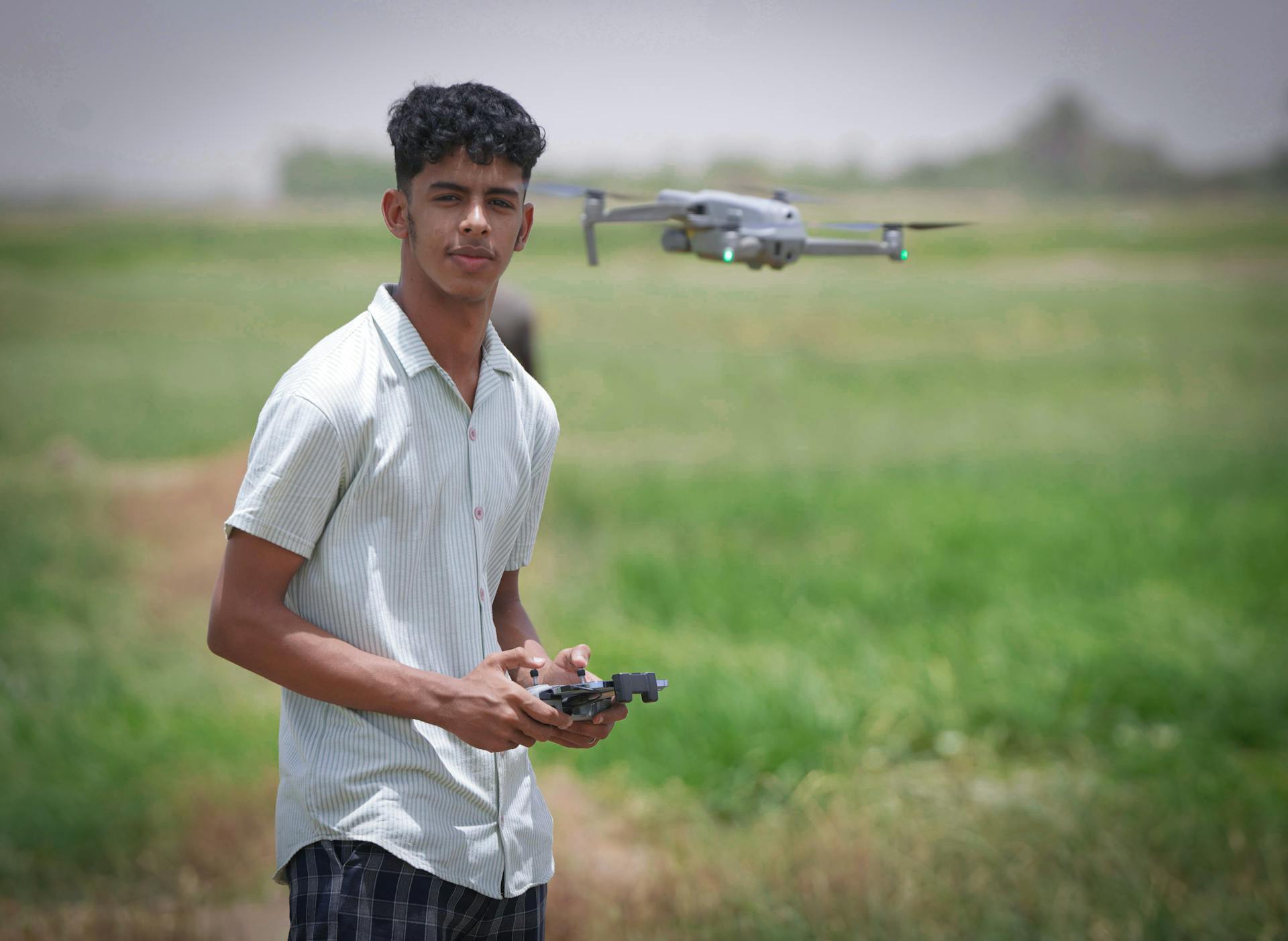
Becoming a drone pilot can be a fun and rewarding experience.
Having a Part 107 certificate can qualify you for jobs in various industries that use drones. Many companies are willing to hire drone pilots with a brand new certificate, and it may also qualify you for additional roles like visual observers or field safety observers.
A Part 107 certificate can even be a foundation for a manned pilot certificate, if you catch the "aviation bug".
Operating a drone is a fun hobby when done safely and respectfully. Many drone operators enjoy participating in online communities and forums.
Cons
Drone pilots may not be welcome in some areas, as homeowners have security, safety, and privacy concerns about drones and may be hostile. In extreme cases, homeowners have blocked vehicle access and even locked access gates, effectively holding drone pilots hostage on their property.
Drones can be damaged or cause damage due to various reasons such as a gust of wind, a signal loss, or a bird attack. This can result in damage to your investment and potential injury to people or damage to property.
A collision with an aircraft has the potential to cause catastrophic damage, making it a serious concern for drone pilots.
New regulations are being implemented, starting in September 2023, where almost all drones flying in the U.S. will be required to broadcast Remote Identification—a unique ID number and their location.
Career and Outcomes
The job market for remote drone pilots is booming, with the Association for Unmanned Vehicle Systems International estimating over 100,000 new jobs will be created by 2025.
This growth is expected to have a significant economic impact, with an estimated $82 billion in economic impact by 2025.
As a remote drone pilot, you can expect a decent salary, with an average salary of $68,966 in the U.S., according to the Economic Research Institute.
Additionally, you can earn an average hourly wage of $33 per hour, which can add up quickly depending on the number of hours you work.
Related reading: Military Drone Pilot Salary
What Does a Do?
As a drone pilot, your job involves flying an unmanned aircraft from launch to landing. You'll be responsible for operating cameras and communicating with property owners or business owners about operations in the area.
Inspecting and troubleshooting drone equipment is a crucial part of the job. You'll need to analyze weather forecasts to determine safe flying conditions.
Filling out flight logs is an important task that requires attention to detail.
Careers & Outcomes
The job market for drone pilots is booming. By 2025, over 100,000 new jobs are expected to be created in the Unmanned Aerial Systems (UAS) industry.
These jobs will have a significant economic impact, estimated to be around $82 billion in the same time frame.
Preparation and Certification
To become a remote drone pilot, you'll need to prepare for the FAA's knowledge test. This test covers topics such as federal regulations, aircraft performance, and emergency procedures.
The test is not as daunting as it sounds, and you can prepare for it by taking a drone ground school course. These courses cover all the knowledge areas on the test, including aeronautical decision making and preflight and maintenance.
You can find a drone ground school course online, and some popular options include Gold Seal, which has been training aviators for over 15 years. Their course is online, interactive, and covers everything you need to know to pass the test.
You'll also need to register for the FAA knowledge test and set up an FAA Tracking Number (FTN) with IACRA. This will allow you to find a test center and schedule your test.
Once you've passed the knowledge test, you'll need to complete FAA Form 8710-13 for a remote pilot certificate. You'll also need to pass a TSA security background check.
The entire process can take around 15-25 hours of study time, depending on how quickly you learn. And with the right preparation, you can become a certificated Remote Pilot in just a few weeks.
Here's a summary of the steps you'll need to take:
- Prepare for the FAA knowledge test by taking a drone ground school course
- Register for the FAA knowledge test and set up an FAA Tracking Number (FTN) with IACRA
- Pass the knowledge test
- Complete FAA Form 8710-13 for a remote pilot certificate
- Pass a TSA security background check
By following these steps, you'll be well on your way to becoming a remote drone pilot.
Steps to Success
To become a successful remote drone pilot, you'll need to be committed to the startup costs, which can include purchasing equipment and insurance.
The field can be lucrative, with opportunities for income available once you've invested in the necessary training and equipment.
To get started, you'll need to purchase the equipment, including drones, cameras, and other necessary gear.
4 Steps to Success
To become a drone pilot, you'll need to complete a program like the Unmanned Aircraft Systems Certificate, which includes 16 hours of flight instruction time.
The process of becoming a drone pilot is relatively straightforward and can be completed quickly, with only 4 steps to follow.
First, you'll need to find a program that meets the requirements of the Federal Aviation Administration (FAA) and is taught by certified flight instructors.
The field of commercial drone piloting can be lucrative, but it does come with startup costs, including equipment, training courses, and insurance.
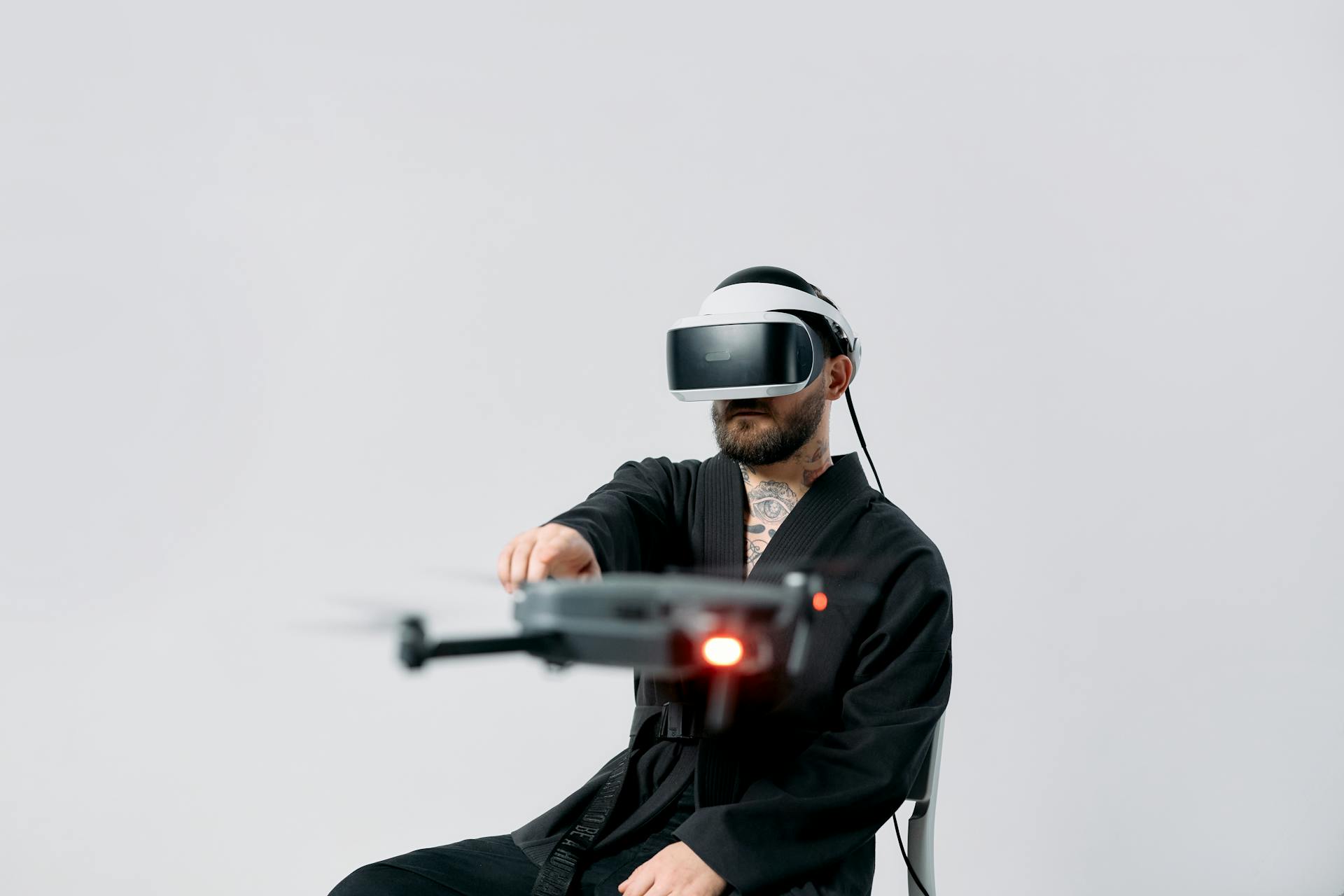
With a strong commitment to learning and a willingness to invest in your training, you can potentially earn hundreds of thousands of dollars per year as a commercial drone pilot.
The annual salary of drone pilots can range from $95,000 to over $500,000, depending on the number of projects you take on and the industry you work in.
Steps to Become a Commercial Actor
To become a commercial actor, you'll need to take specific actions. To start, you'll need to find a reputable acting school or program to hone your craft.
Getting professional training is crucial, just like becoming a commercial drone pilot requires specific actions to take. You'll want to look for a school that offers classes in acting, improvisation, and auditioning techniques.
Researching the industry is also key. This includes understanding the types of roles available, the different types of acting, and the industry's expectations. You can find this information by reading articles and talking to professionals in the field.

Networking is essential to finding auditions and getting your foot in the door. Attend acting workshops, join acting groups, and connect with other actors on social media to start building your network.
Taking risks and being open to new experiences is also necessary for success. Just like becoming a commercial drone pilot requires taking specific steps, becoming a commercial actor requires being willing to take on new challenges and roles.
Curious to learn more? Check out: New Military Drone
Education and Training
Gold Seal's multimedia lessons cover every topic on the Remote Pilot test with 30+ interactive lesson modules. These aren't just lectures - you're part of the process, which guarantees better learning from start to finish.
Testing and Licensing
To become a remote drone pilot, you'll need to pass a written test and obtain a license from the Federal Aviation Administration (FAA). The test covers topics such as federal regulations, aircraft performance, and emergency procedures.
The test is known as the UAG Unmanned Aircraft General - Small knowledge test, and it's not required to take a drone ground school course, but it's highly recommended. The course will cover all the knowledge areas on the test, including federal regulations, aircraft performance, and emergency procedures.
To prepare for the test, you can take a drone ground school course, which will help you understand the important concepts and provide you with practice tests. Once you feel ready, you can set up an FAA Tracking Number (FTN) with IACRA, find a test center, and register for the FAA knowledge test.
The test costs $175 and can be taken at an FAA-approved location, which is likely to be a local flying club or airport. You'll need to answer 70% of the 60 multiple-choice questions correctly to pass.
Here are the key topics covered on the test:
- Federal regulations that apply to small aircraft operations
- Aircraft performance and loading
- Checking airspace
- Emergency procedures
- Aeronautical decision making
- Preflight and maintenance
- Operations at night
You can also take practice tests to increase your knowledge and feel more comfortable when the actual test rolls around. The FAA offers an online study guide, and websites like Remote Pilot 101 and Gold Seal's UAV Ground School can also help you prepare.
Frequently Asked Questions
Do I need an FAA license to fly a drone?
To fly a drone under the FAA's Small UAS Rule, you need a Remote Pilot Certificate, which proves you understand drone regulations and safety procedures. Get certified to fly your drone safely and legally.
How many drones can a remote pilot control fly at the same time?
A remote pilot can only control one drone at a time. They cannot simultaneously act as a remote pilot for multiple UAS operations.
Sources
- https://www.snhu.edu/campus-majors/certificates/unmanned-aerial-systems
- https://www.flyingmag.com/guides/becoming-a-drone-pilot/
- https://thedronecoach.io/course/faa-part-107-remote-pilot-course/
- https://groundschool.com/remotepilot
- https://www.businessnewsdaily.com/10967-become-commercial-drone-pilot.html
Featured Images: pexels.com
